Would You Like To Meet A Ghost?
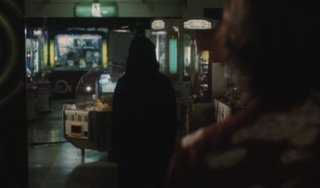 Asian horror cinema’s most popular directors are Hideo Nakata (creator of THE RING and DARK WATER), and Takashi Shimizu (all things GRUDGE including the American remake). Far outside the mainstream is Takashi Miike (AUDITION, ICHI THE KILLER), who caters to the hip and Kiyoshi Kurosawa who is more of a critics favorite.
Asian horror cinema’s most popular directors are Hideo Nakata (creator of THE RING and DARK WATER), and Takashi Shimizu (all things GRUDGE including the American remake). Far outside the mainstream is Takashi Miike (AUDITION, ICHI THE KILLER), who caters to the hip and Kiyoshi Kurosawa who is more of a critics favorite.I’ve seen three from Kurosawa, including his most acclaimed films CURE (where a serial killer works through hypnosis) and CHARISMA (about a strange tree that infests a village with evil.) Those descriptions may sound odd, but the films themselves are even more elusive. Kurosawa’s movies are not “horror” the way us Americans know it. They’re artful meditations…morality tales. I HATE them. Kurosawa can create atmosphere, but the films are painfully slow and numerous scenes exist for reasons I cannot fathom.
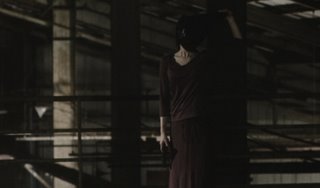 PULSE is the first Kurosawa film that I get, (like David Lynch’s MULHOLLAND DR.) This one equals the hype and avoids Kurosawa’s usual failures, while delivering everything I’ve been told he was great at. Once again, this is not horror with big scares that make you jump, but profoundly disturbing and more than a little creepy, with numerous scenes that made me nervous. And without the jumps to release tension, PULSE maintains a tight grip. Just like 2046, the mood here is just right so there’s no need to hurry things along.
PULSE is the first Kurosawa film that I get, (like David Lynch’s MULHOLLAND DR.) This one equals the hype and avoids Kurosawa’s usual failures, while delivering everything I’ve been told he was great at. Once again, this is not horror with big scares that make you jump, but profoundly disturbing and more than a little creepy, with numerous scenes that made me nervous. And without the jumps to release tension, PULSE maintains a tight grip. Just like 2046, the mood here is just right so there’s no need to hurry things along. 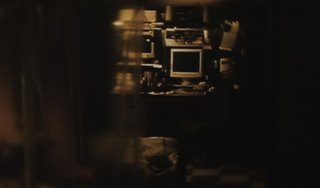 The plot of PULSE revolves around the internet, asking are we really still “connected” to fellow human beings anymore? The film’s answer: of course not. With technology we’re actually more isolated. The ghost world is very similar and that shared loneliness creates a bridge between the two worlds. The ghosts don’t have an evil plan. They just don’t want to be alone.
The plot of PULSE revolves around the internet, asking are we really still “connected” to fellow human beings anymore? The film’s answer: of course not. With technology we’re actually more isolated. The ghost world is very similar and that shared loneliness creates a bridge between the two worlds. The ghosts don’t have an evil plan. They just don’t want to be alone. 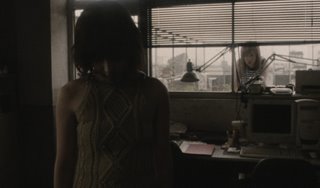 Kurosawa’s theme is that we live alone, and remain alone after death. There are no happy endings, and even the closest of people can never truly connect. Each person is an individual, and within each individual is a bottomless pit of loneliness that never ends.
Kurosawa’s theme is that we live alone, and remain alone after death. There are no happy endings, and even the closest of people can never truly connect. Each person is an individual, and within each individual is a bottomless pit of loneliness that never ends.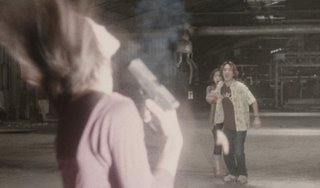 There is a hopeless look and feel to the film from the very beginning. The universe seems forever cast in shadows, regardless if it’s night or day. It’s the world we know, but not the world we know, and that's what makes it most unsettling.
There is a hopeless look and feel to the film from the very beginning. The universe seems forever cast in shadows, regardless if it’s night or day. It’s the world we know, but not the world we know, and that's what makes it most unsettling. 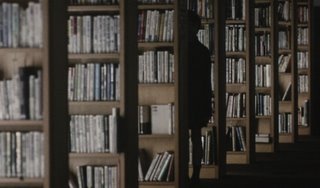 The ghosts are never shown in stark light -- we never see “all” of them, and it’s preferable that we don’t, since the problem with many horror films is that they show too much too soon. These ghosts quiver and slink and quite literally move in a disjointed way. Their coming and going are very effective at making my skin crawl.
The ghosts are never shown in stark light -- we never see “all” of them, and it’s preferable that we don’t, since the problem with many horror films is that they show too much too soon. These ghosts quiver and slink and quite literally move in a disjointed way. Their coming and going are very effective at making my skin crawl. 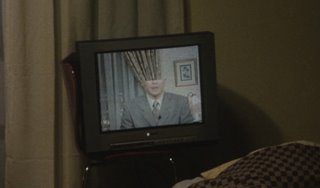 With many horror movies you have to sit through 90 minutes of our heroes trying to convince the world that “something evil” is out there. The world of PULSE is presently being invaded by beings from another dimension, and there is a ripple affect as everyone begins to experience similar events. Slowly but surely, the world starts to thin out, but not in the loud and splashy way you expect.
With many horror movies you have to sit through 90 minutes of our heroes trying to convince the world that “something evil” is out there. The world of PULSE is presently being invaded by beings from another dimension, and there is a ripple affect as everyone begins to experience similar events. Slowly but surely, the world starts to thin out, but not in the loud and splashy way you expect.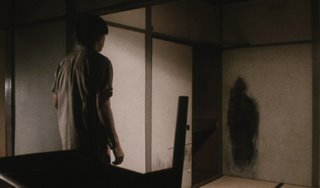 With previous Kurosawa films (and some other Asian horror) I‘d pull my hair out at the slow pace as characters ponder the happenings -- and ponder, and ponder, and ponder some more. This time Kurosawa is careful not to let the quiet scenes stay quiet for too long. There are very few of the stationary wide shots he usually employs. The film also makes good use of music, and the soundtrack, utilizing computer beeps and hiss, proves to be an asset.
With previous Kurosawa films (and some other Asian horror) I‘d pull my hair out at the slow pace as characters ponder the happenings -- and ponder, and ponder, and ponder some more. This time Kurosawa is careful not to let the quiet scenes stay quiet for too long. There are very few of the stationary wide shots he usually employs. The film also makes good use of music, and the soundtrack, utilizing computer beeps and hiss, proves to be an asset.An American remake is on the way, and the elements here could easily be tweaked into really good “jump n scare” cinema. I think it could also sustain a more direct translation, which would be much tougher to market, but in the right hands could be equally rewarding. The Japanese version is fantastic horror for the brain and recommended to anyone who prefers to get their mind stimulated over their adrenalin.
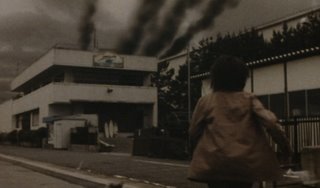



1 Comments:
your movie and web site is badass make more ill watch it even if it is not in i wil count on it
Post a Comment
<< Home